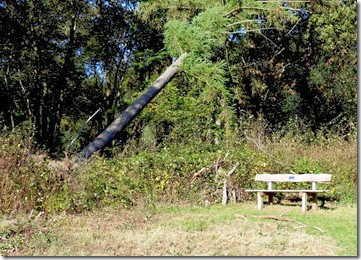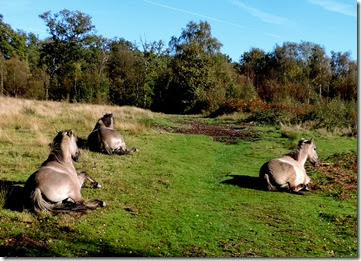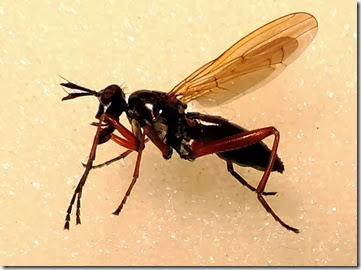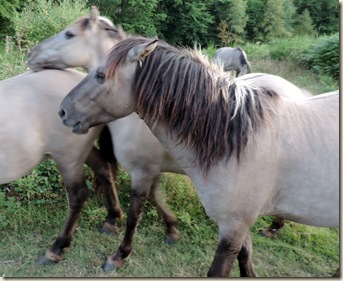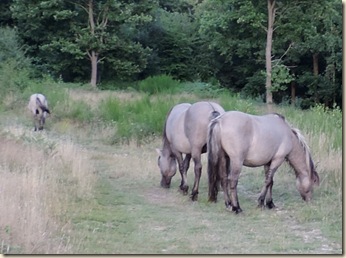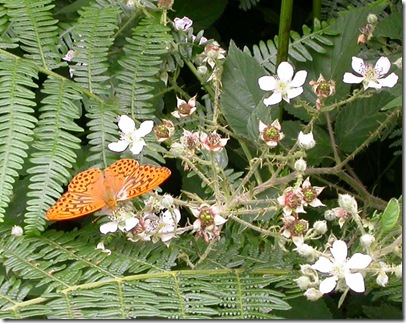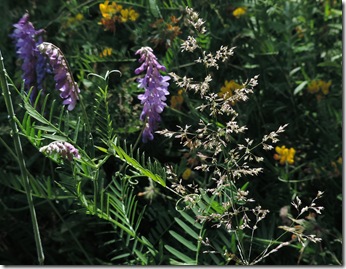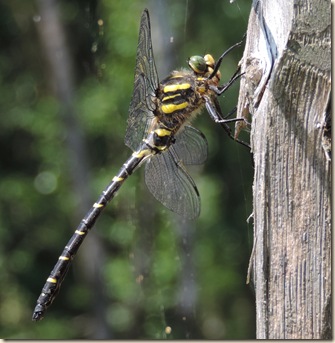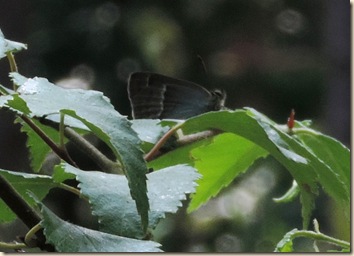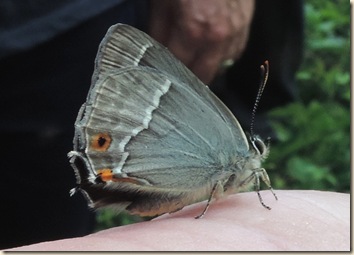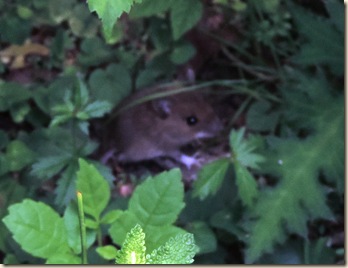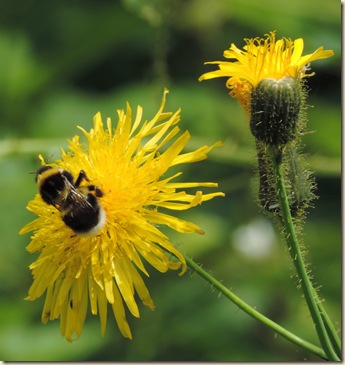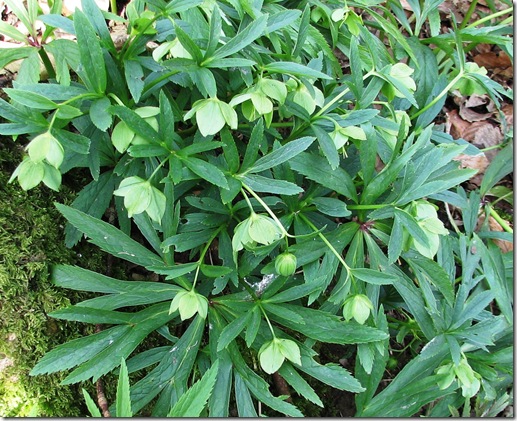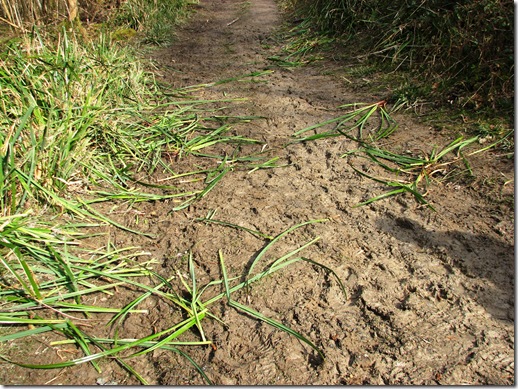On a lovely sunny morning a couple of days after the St Jude's storm on 28th October I walked down the track to Austford and round the area where the Konik horses graze.
Apart from the leaves and small branches littering the ground, there was little evidence of the recent high winds, the only obvious casualty seemed to be this larch tree.
Along the ride to the east I saw the horses sleeping stretched out on their sides in the autumn sunshine. They put their heads up as I came nearer and the friendliest stallion walked up to me for a stroke.
Later I looked for insects in the purple moor grass area of Compartment 5a and, among other things, found several of these fierce-looking but harmless marsh flies, Sepedon sphegea whose larvae are parasitic in water snails.
